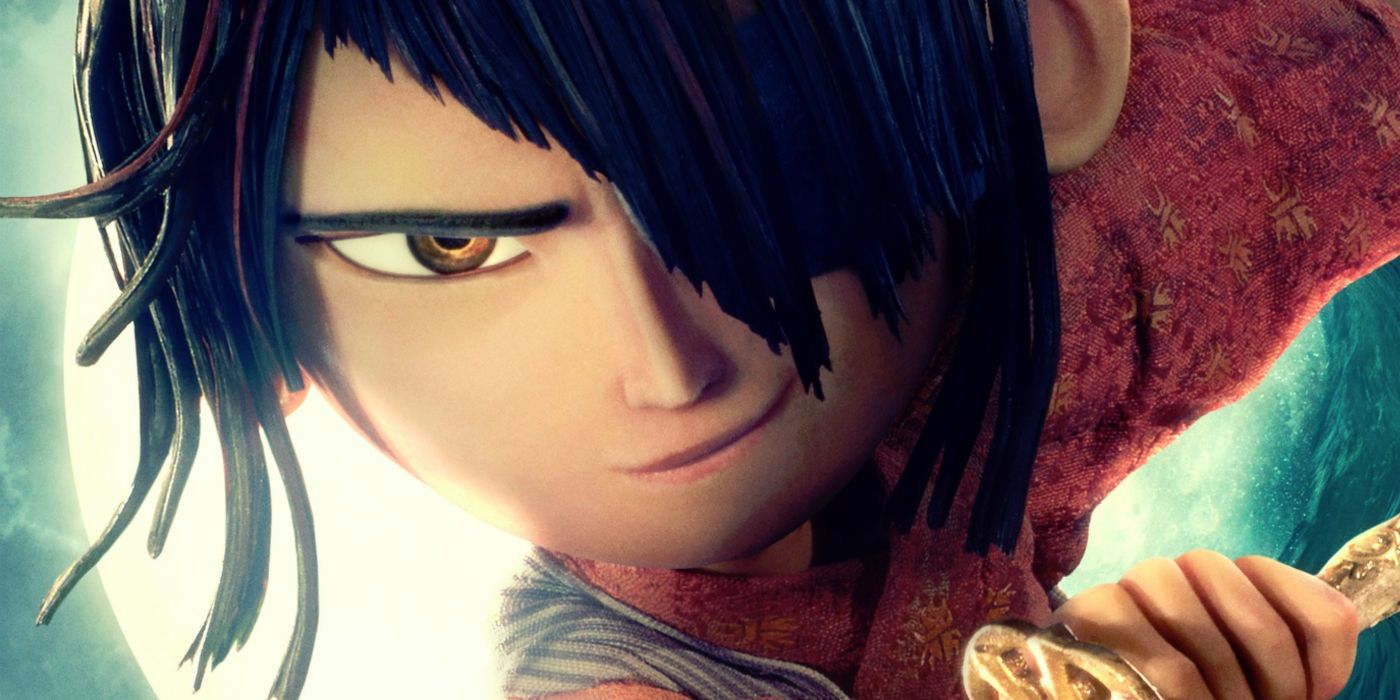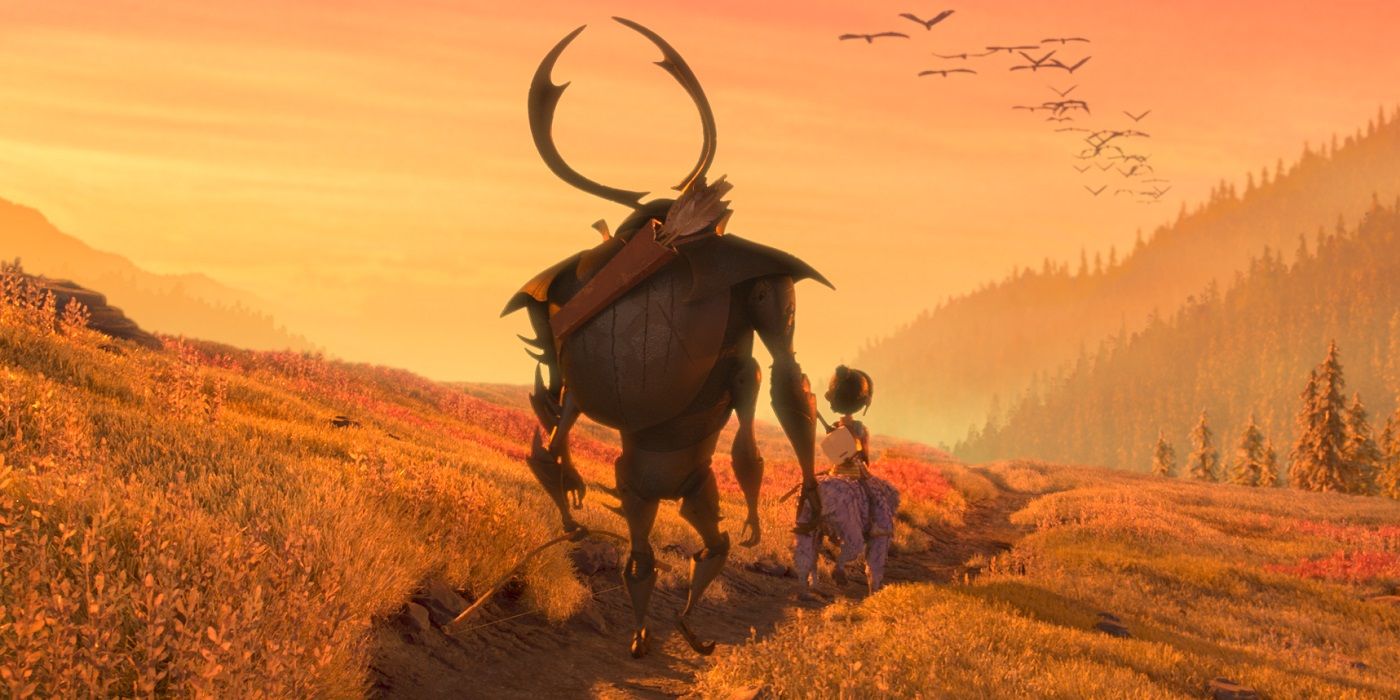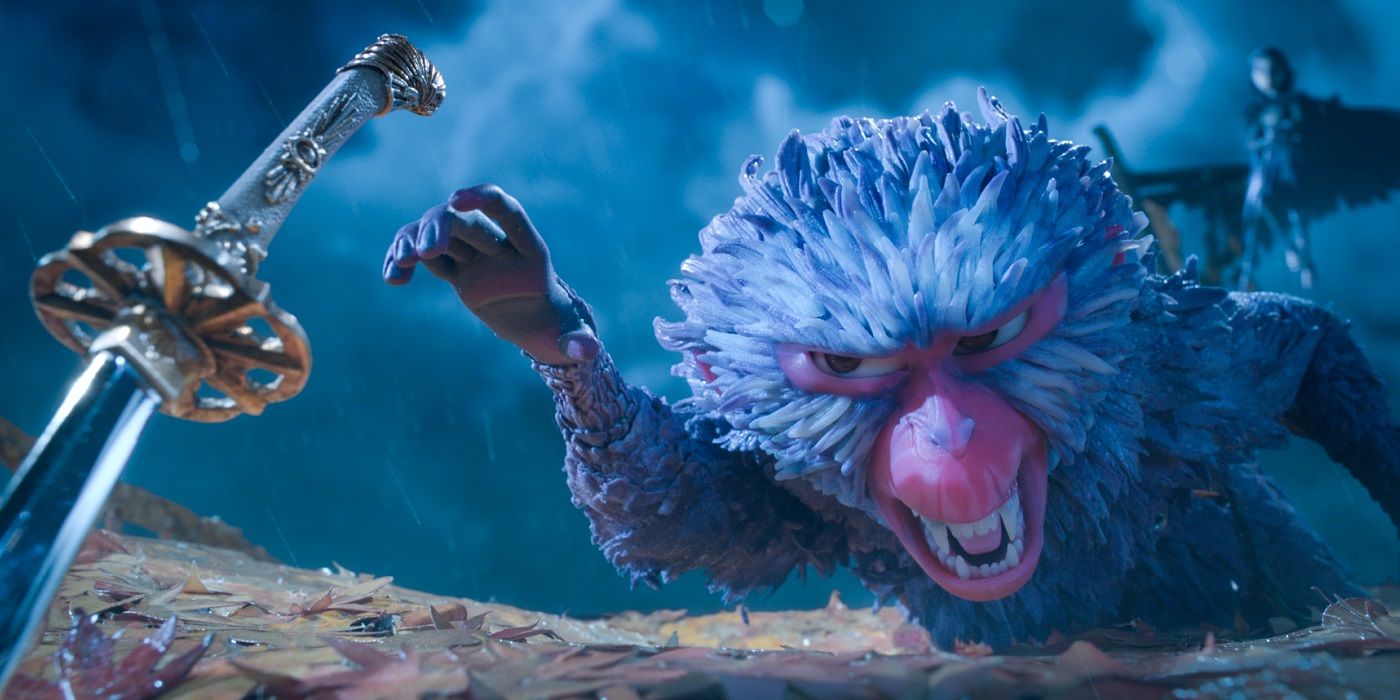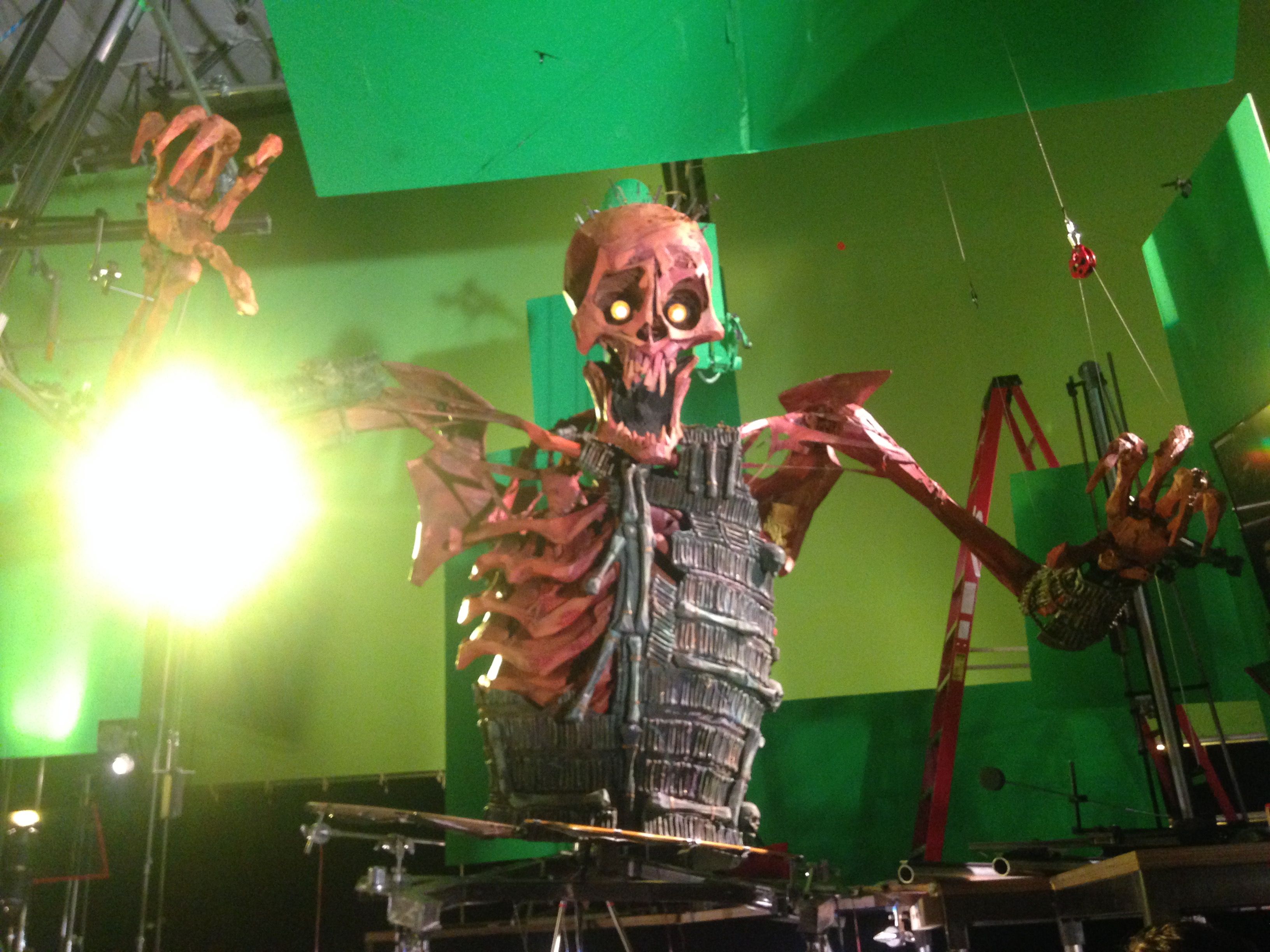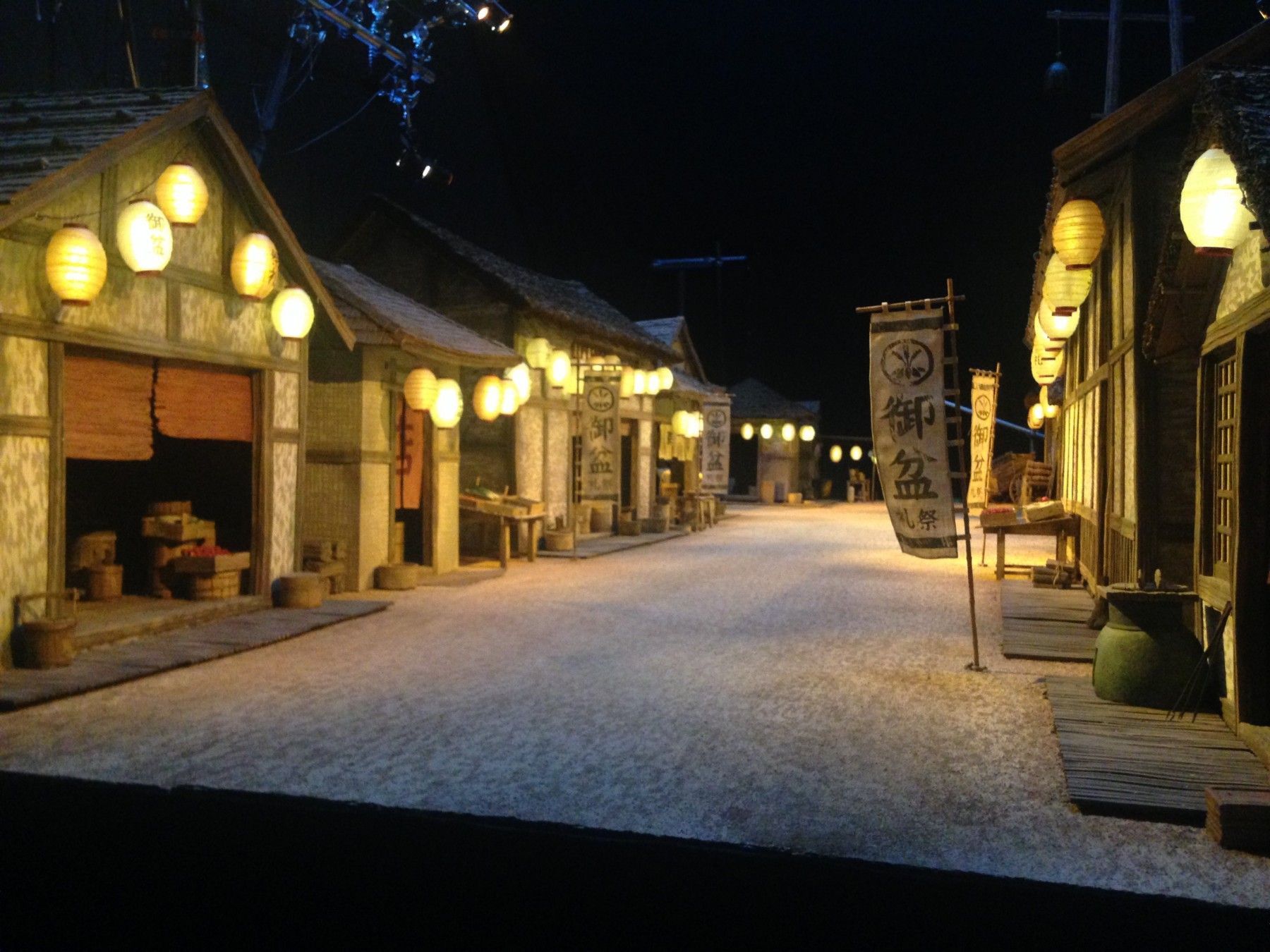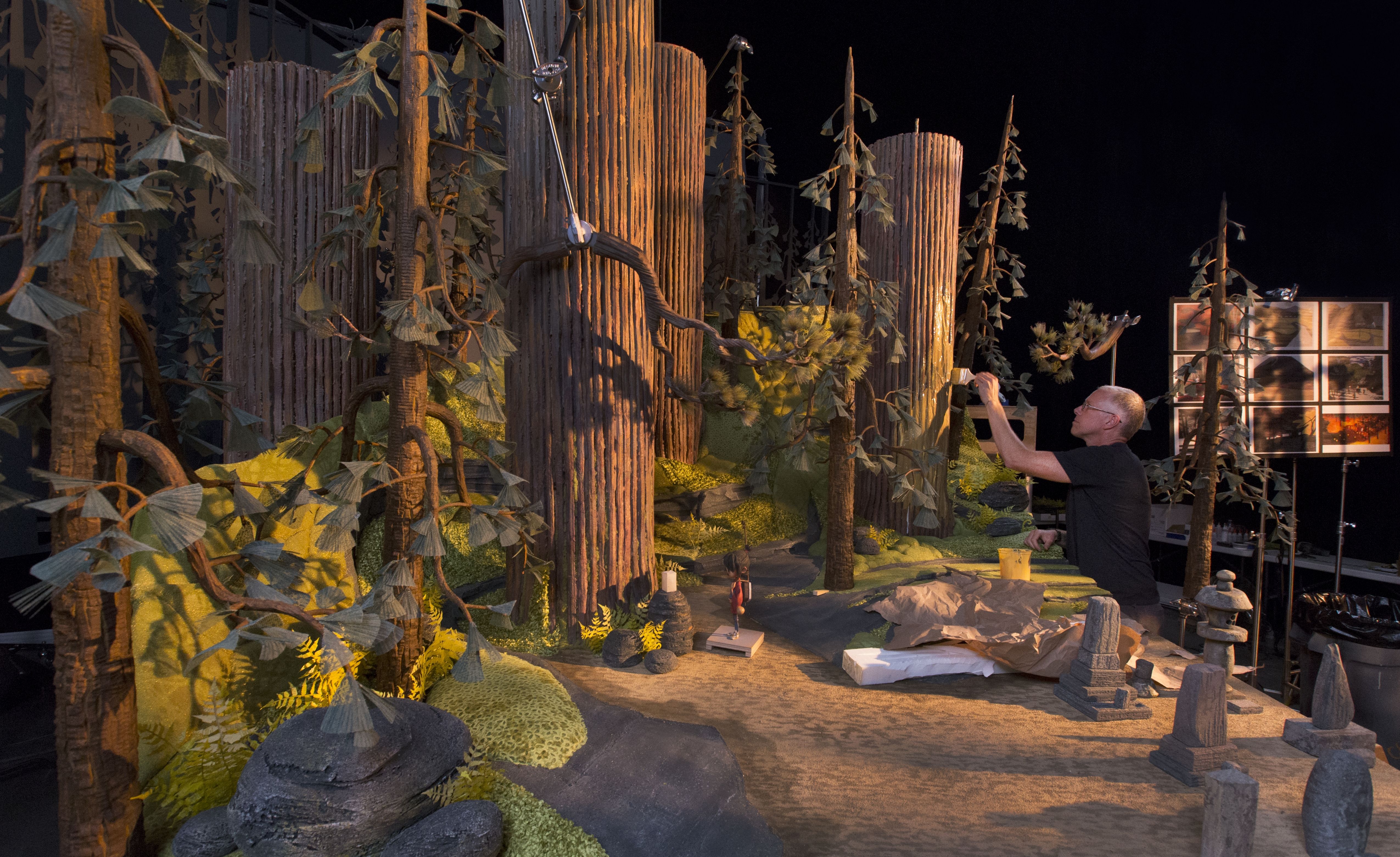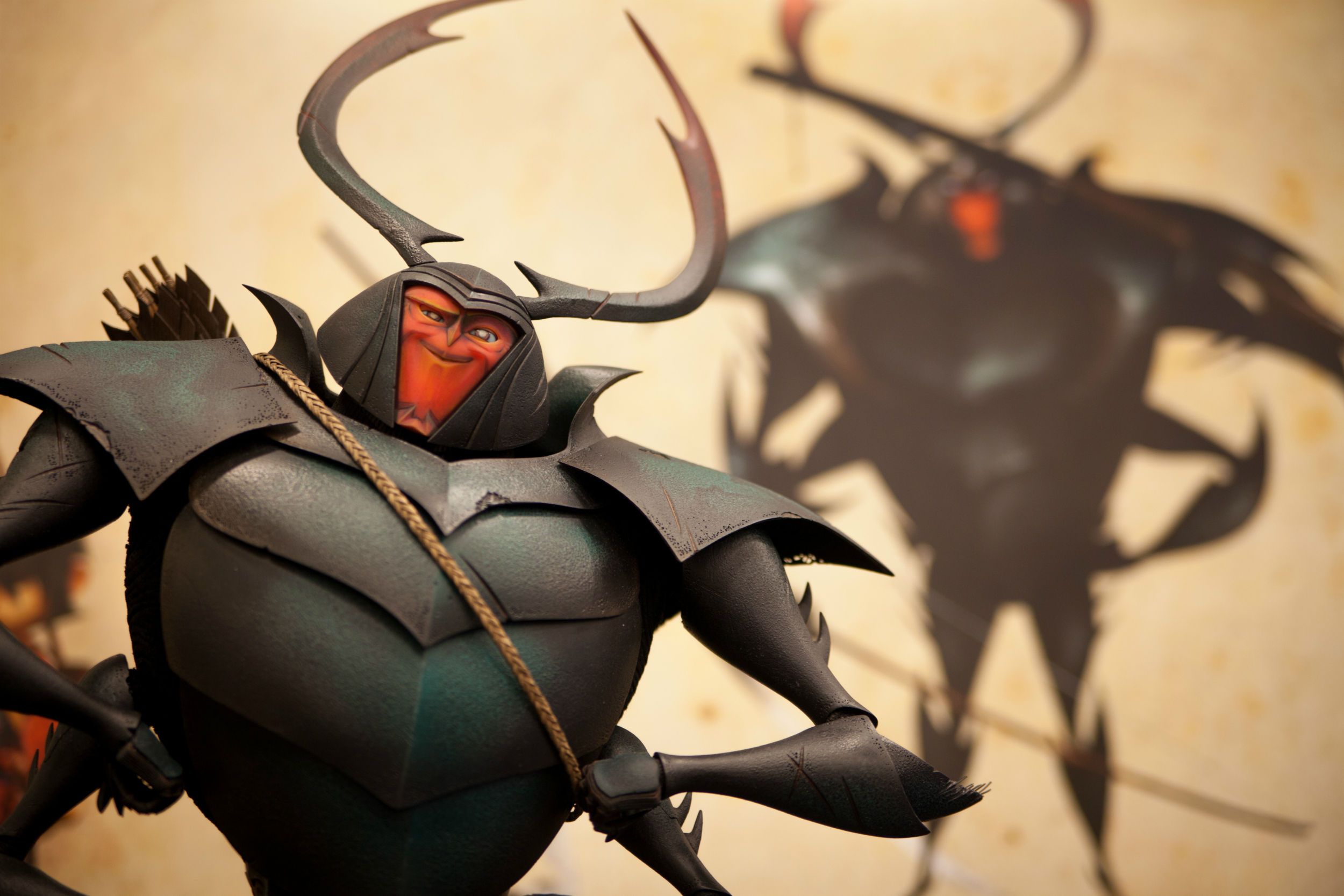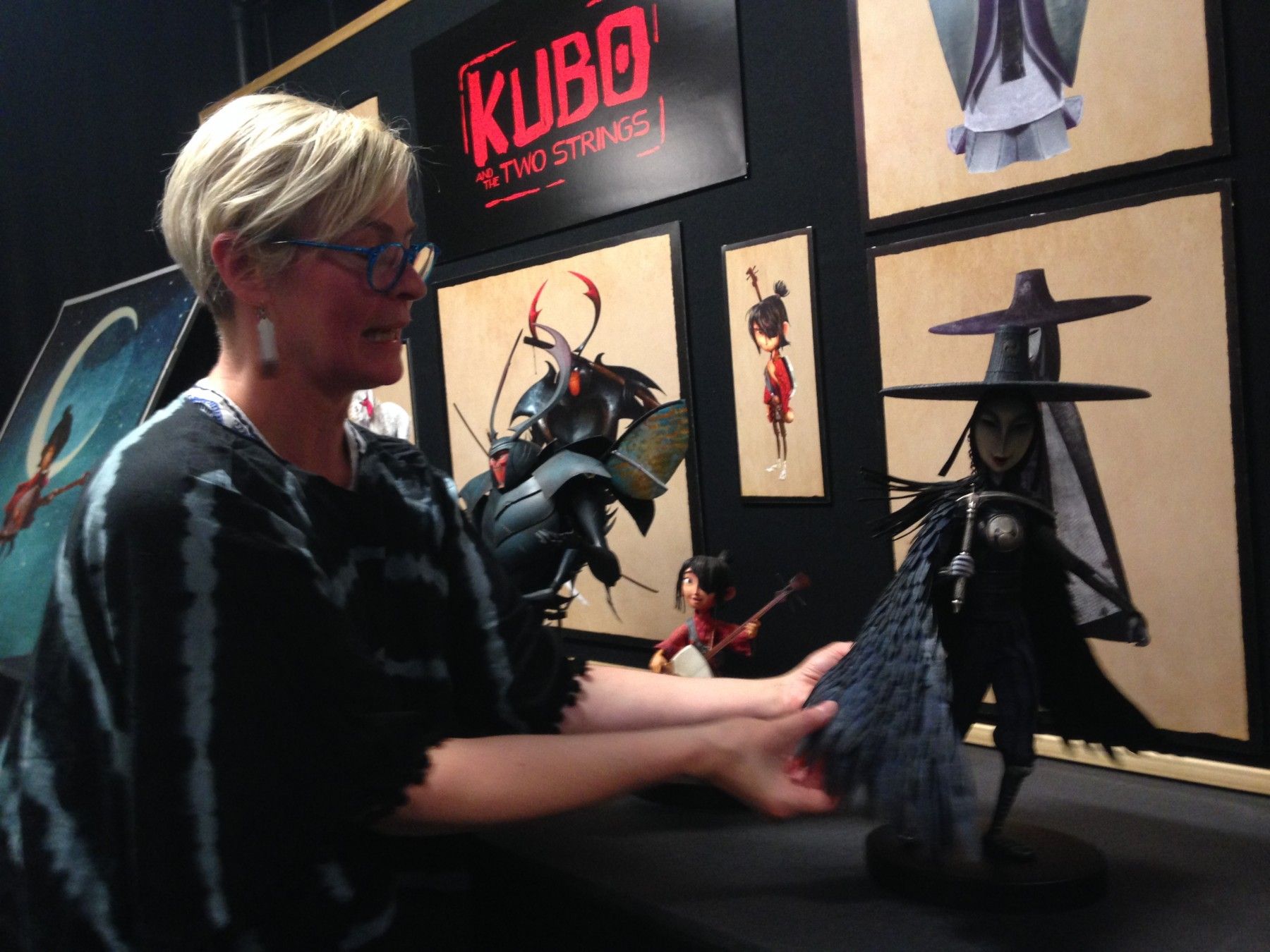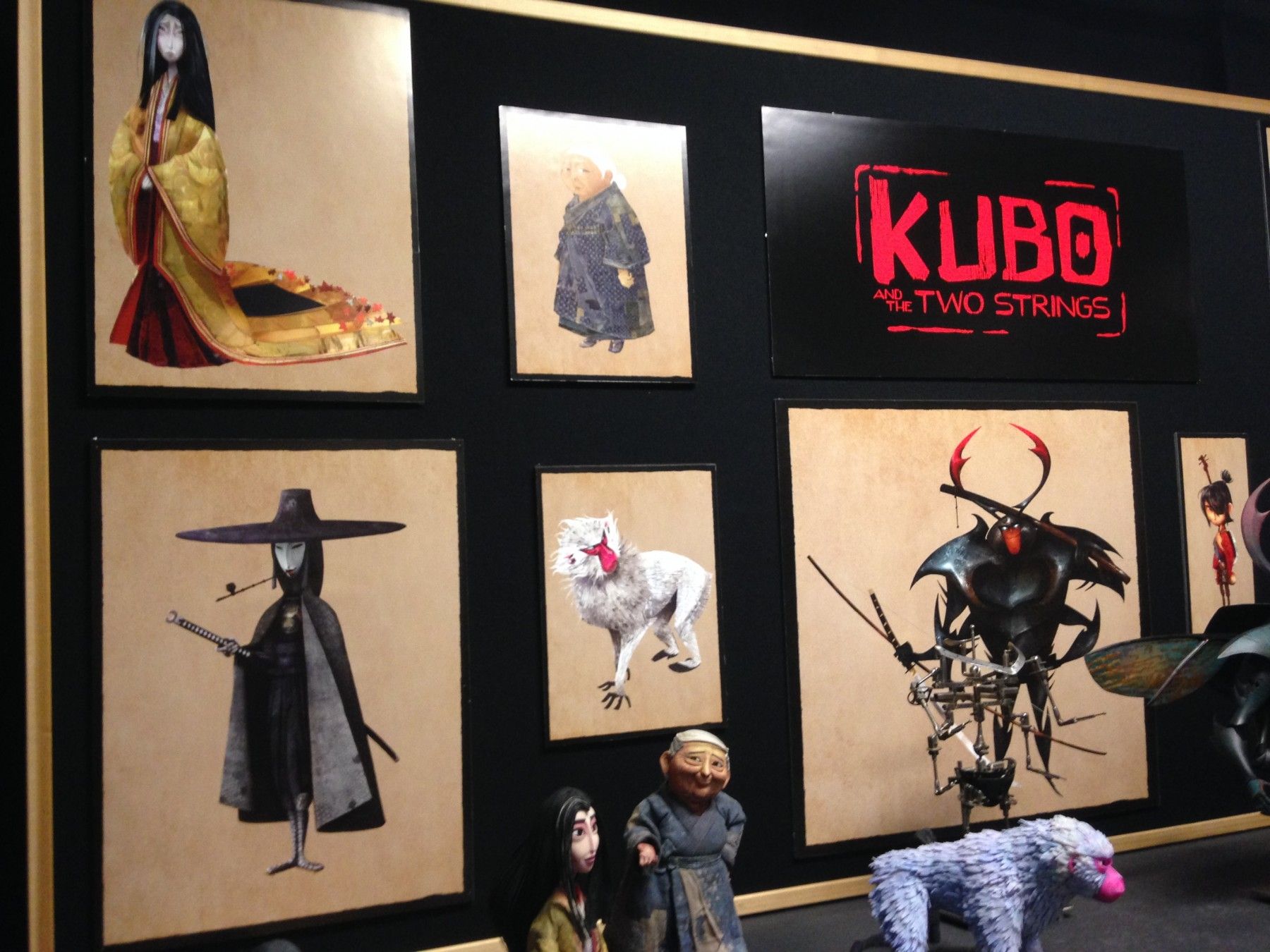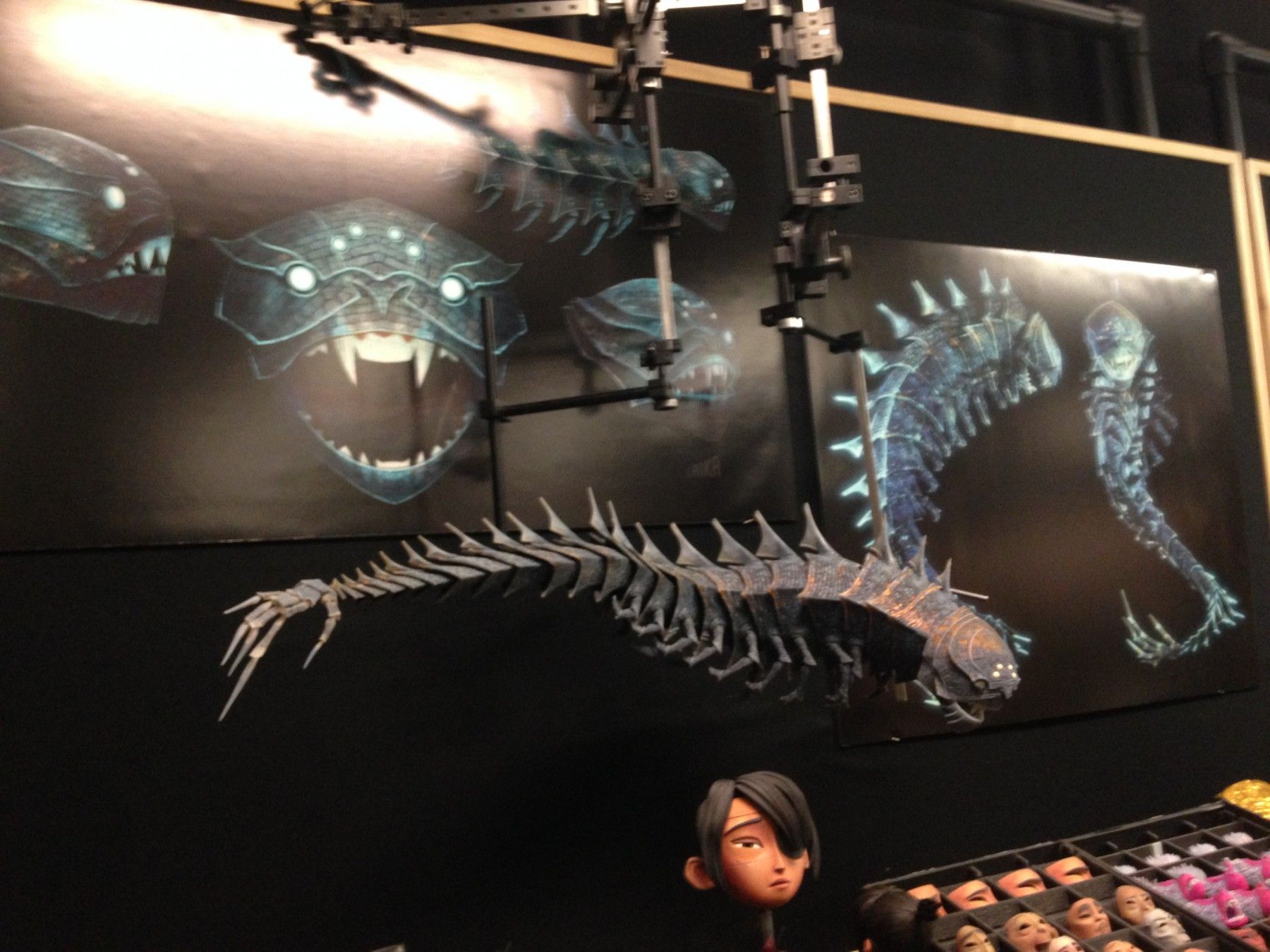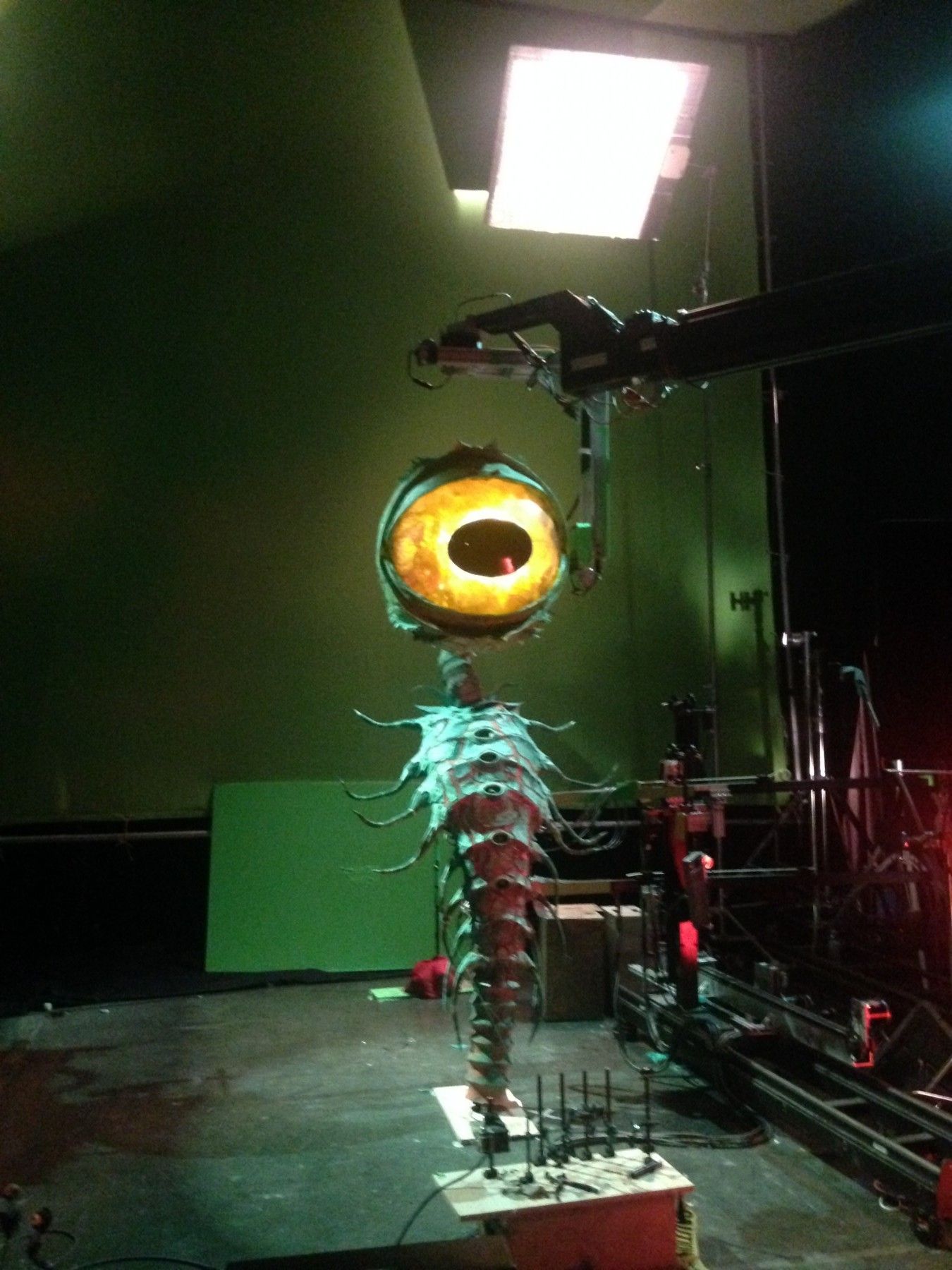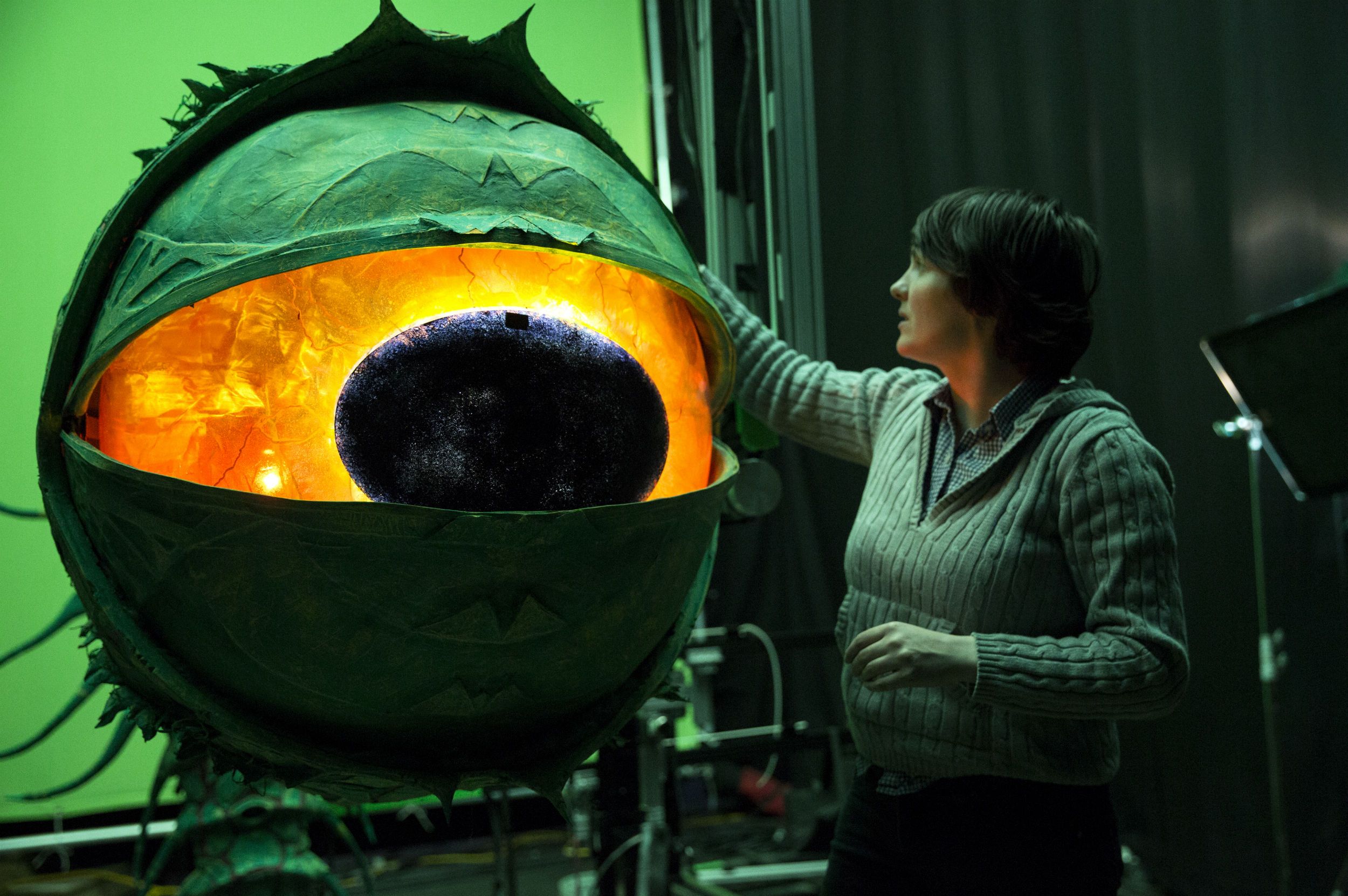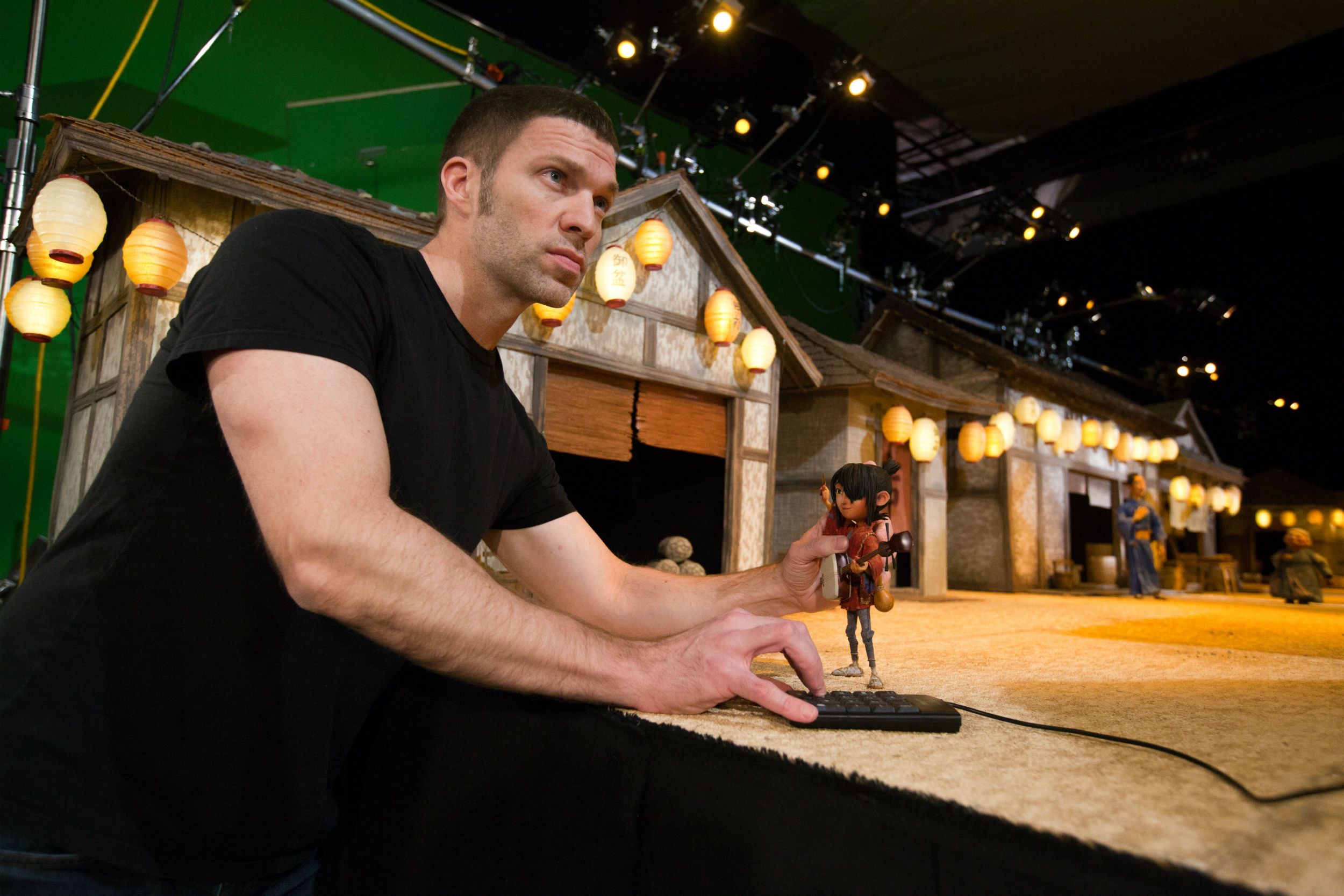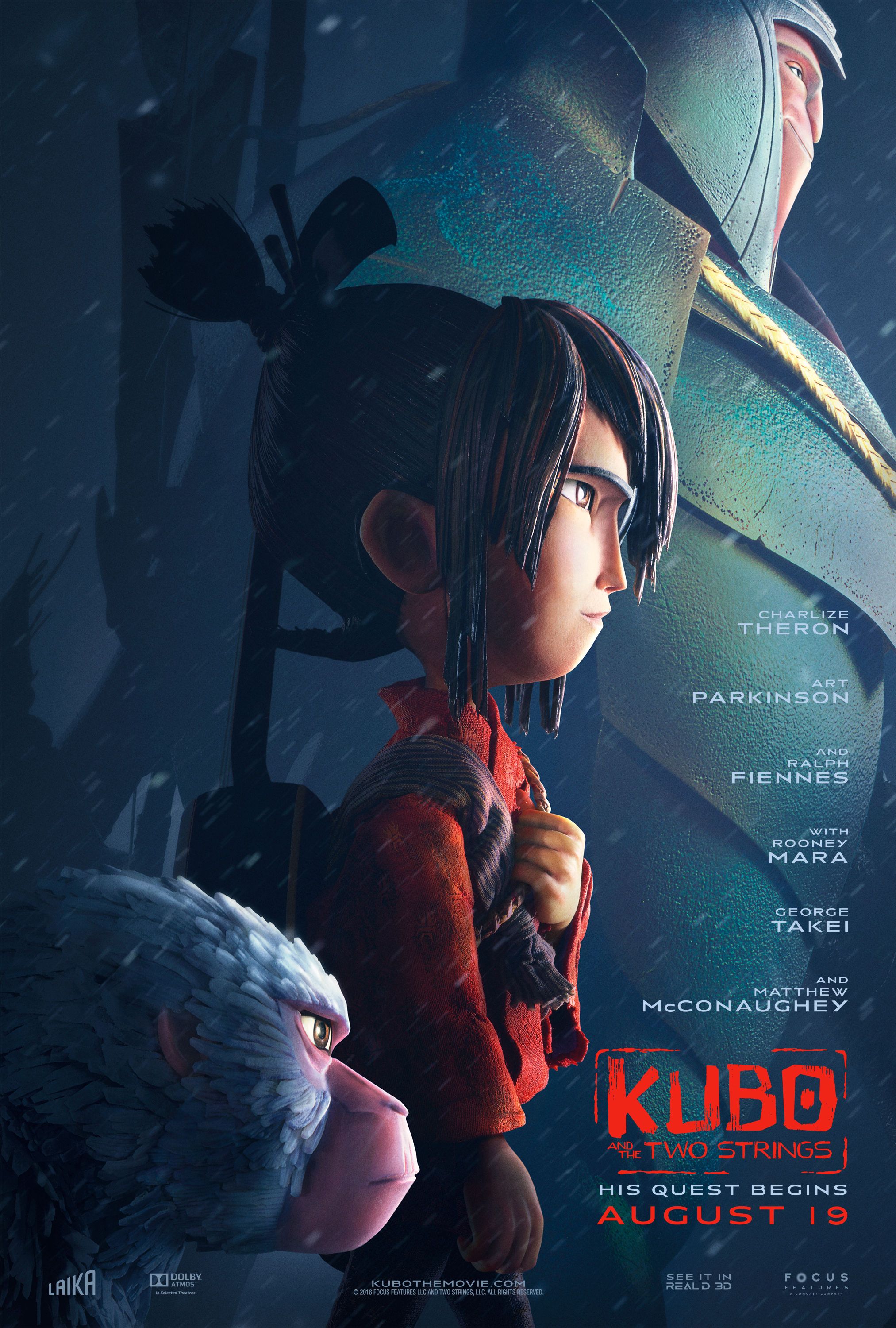For the past five years LAIKA Entertainment has been hard at work on their most ambitious animated film yet. The studio, located outside of Portland, Oregon, previously delighted audiences with their charming and wonderfully animated stop-motion films Coraline, ParaNorman, and The Boxtrolls.
Screen Rant had the privilege of traveling up to Portland to visit LAIKA Entertainment's massive studio, a warehouse filled with miniaturized characters, props, and sets. There, we got an inside look at how a stop-motion film is made and a much anticipated behind-the-scenes look at Kubo and the Two Strings.
Kubo is the directorial debut of LAIKA CEO, Travis Knight. Knight has produced and worked as an animator on the three aforementioned films. Not wanting to put down his “dolls,” Knight continued to animate on Kubo. His scene was a singularly beautiful sequence, one of several screened for the press.
Kubo is a film of many more firsts for the LAIKA company, a studio that continually challenges themselves to go “bigger” in a world of miniatures. From a story standpoint, the film is relatively similar to LAIKA’s earlier efforts. It concerns a young, titular character at the precipice of adulthood that battles a fantastical evil. This is a mold that defines LAIKA; its films are darker and more dangerous than the typical animated feature nowadays. In ParaNorman, Norman battles the undead; in Coraline, Coraline travels into a terrifying mirror world. LAIKA honors the traditions of classic Disney animated films like The Black Cauldron, believing there are benefits to scaring children.
Kubo and the Two Strings follows a 12-year old boy (Kubo, played by Art Parkinson) growing up in a fantastical version of ancient Japan, where origami comes to life when the right melody is played on a magical shamisen. For those unfamiliar, a shamisen is a Japanese folk instrument, similar to an American banjo, with three strings. Kubo inherits a gift from his mother; his song can command the winds.
When Kubo accidentally awakens an ancient evil, he must go on a mystical journey to uncover the secrets of his family’s past. On his path, he befriends the courageous Monkey (Charlize Theron) and lovable Beetle (Matthew McConaughey) and together they face the Twin Sisters (Rooney Mara) and the Moon King (Ralph Fiennes).
LAIKA treated us to an approximately 15-minute sizzle reel, comprised of four separate scenes. MILD SPOILERS AHEAD, for those readers who want to go in knowing as little as possible about Kubo and the Two Strings, ahead of time.
On a stormy night, a young woman paddles across the waves in a small boat. An infant clings to her back, wrapped in a kimono decorated with a beetle insignia. Suddenly, a giant wave rears up in her path, but by striking a single chord on her shamisen, it falls back to the turf. However, another wave instantly appears behind her, knocking her off the boat, where she falls below the waves, hitting her head hard on a rock.
She awakens on the sandy shore of an island to the sound of her child crying. She drags her broken body towards him to make sure that he is unharmed. Lifting the make-shift blanket off his face, she reveals her son is missing his left eye.
Cut to about 10 years later. Kubo is a pre-teen who seemingly raised himself. His mother was left physically and emotionally scarred in the aforementioned shipwreck and needs Kubo to cook, clean, and help to feed her. Kubo longs for information about his father, but his mother offers him nothing.
Kubo leaves their house on a precarious cliff-side to perform in the village below, populated by many delightful characters. By strumming on his shamisen, he brings small origami figures to life and they dance and fight to his tune. The song tells the story of Hanzo, a brave warrior who must collect three powerful artifacts in order to defeat the evil Moon King. The sequence was phenomenally animated, using elements of stop-motion and CGI. Hanzo fights a giant spider, an evil samurai, and a fire-breathing chicken, to the delight of his fans.
Far later in the film, Kubo and his companions, Monkey and Beetle enter into the mysterious Hall of Bones, where the Sword Unbreakable sits on a perch in the center. Kubo believes this is a sword of myth, identical to the one in the story he told. The scene itself is heavily influenced by the Indiana Jones opening: the sword is revealed to be a fake, as a giant skeleton rises from the ground to face our heroes. Kubo and his friends work together to face the creature in a thrilling sequence.
[End footage SPOILERS.]
Perhaps the most impressive element of the footage is the knowledge that most everything we saw was built practically. This included water effects (to an extent), the origami figures, and practically all characters, props, and sets.
The giant skeleton in the Hall of Bones stood 17 ft. tall, breaking the record of the largest animation puppet ever built. Additionally, its wingspan from arm to arm is about 24 ft. It was made so that the Kubo puppet could actually be animated with the creature, as opposed to adding it in later with computer graphics. While the puppet was often broken into smaller parts to cut down on filming time, we were treated a view of the massive torso, impressively detailed given the size.
The Hall of Bones the skeleton rises from was actually mostly digital, an octagonal hall with only a single practical piece; the other 7 walls were the same wall digitally copied. Given the scale of the skeleton, it would have been much more costly and difficult to build the entirety of the set.
When it comes to environments, Kubo and the Two Strings, continued to defy expectations. LAIKA built more environments for the film than ever before, ranging from forested graveyards to snowy plains. Each piece of the environment is built specifically for the movie, though LAIKA isn’t afraid to reuse pieces multiple times. In fact, if you see a grouping of trees, it is most likely only a few trees placed in one shot, than those same trees placed again in another.
Kubo’s village is one of many sets that is a sight to behold. With a complete length of 80ft when put together, the set has practical miniature lanterns installed along the houses.
Below is an interior set, one where the animator stands inside it to move around the characters. Pieces are moved around and removed to allow them easy access to the props and puppets. This set is a small home that belongs to a legendary samurai.
The above image shows a large "outdoor" graveyard set with Production Designer Nelson Lowry supervising.
Decorating these fantastical sets are equally wonderful characters. LAIKA constantly challenges themselves, designing a character on the page first, then inventing new technologies and approaches to meet their vision.
For example, the character of Beetle (Matthew McConaughey) was designed with two arms more than the typical puppet, making him more difficult to animate and build. The armature, or skeleton, of Beetle had to be incredibly precise and sturdy. His outward appearance also required a lot of work, with about 85 external pieces on his armor. The armor must be moved by an animator to show the re-positioning of his body when he walks, sits, and participates in other activity.
Charlize Theron’s Monkey was far more complicated: coated entirely in hair, the puppet designers wanted her to appear real to a certain degree. This meant using human hair mixed with silicone, which actually comprises most of their characters’ wigs. Monkey’s fur was a trick for the designers, but their efforts truly paid off. In the footage viewed, her hair moves with the elements in seemingly authentic ways.
The Twin Sisters (voiced by Rooney Mara) came with their own difficulties. Armed with capes that can turn into wings at a moment’s notice, LAIKA went the route of building them physically, rather than animating them with CGI like Man of Steel. Each cape has 183 individual feathers wrapped together using piano wire around a tight spine. The cape can bend and form into the wing-like appearance. Below, Creative Supervisor Georgina Hayns demonstrates the movement on one of the various puppets.
Each character is built on average 9 ½ inches high, ideal for the animators to move around their approximately 43 ½ in. high sets. Hanzo, Kubo’s origami-companion-come-to-life, is actually built larger than Kubo so that enough detail can be shown when he is individually animated. Because of this, his model’s scale is around 732%.
Hanzo’s design speaks to a major inspiration for the film itself: Japanese art. LAIKA sent their animators to an origami and kirigami convention to take courses and read books on the subject, essentially making their employees experts on the art-form. As practice, and for visual design help, the team built real origami versions of all the origami characters out of paper before building them out of the 3D printed materials.
This impressive creature (below) may appear small, but when fighting Kubo, that small tail is large enough to grab Kubo’s entire body, functioning as a hand. In scale to us, the creature would be 73 ft. long. For the shot of Kubo being grabbed, a 4ft. long hand-tail was built. If that wasn’t impressive enough, this Moon Beast is also the 1st fully 3D-printed character.
This is the Underwater Garden of Eyes, or rather one of several eyes among six. This terrifying beast is actually built 100% scale to the 9 inch Kubo, giving you an idea of how large it is in the film. To create the glassy look in the eye, it was filled with steel mesh, and LEDs placed behind the pupil to add the ethereal deep-ocean appearance.
While the puppet itself may seem incredibly high-tech, LAIKA uses any resource necessary to get the desired effect. For the Garden of Eyes, the puppeteers or riggers actually animate the creature with their own invention. By placing a large bowling ball on a rig setup with two old Apple mice, they are able to move the eye around in different directions, controlling the pupil and the exterior of the eyeball.
Kubo and the Two Strings broke many technical records for LAIKA, but for a company that is all about innovation, story always comes first. They are devoted to “telling new and original stories in new and original ways.” Kubo is also a very important film to first-time director and CEO Travis Knight. We had a chance to sit down with Knight and discuss LAIKA’s inspirations for the project.
The Japan-out-of-time aesthetic was largely influenced by Kiyoshi Saito, a 20th century woodblock artist from Japan, whose lines in his paintings mimicked the curves of wood and bark. Though translating Saito’s 2D art to 3D models initially proved difficult, LAIKA stuck with it, adding this style to nearly every element of their sets and characters. In fact, if you were able to look closely enough, every raindrop in the film has Saito’s woodblock patterning.
Knight added that Kubo was a transition for LAIKA to a new style of design from their last film, The Boxtrolls. Where the latter featured crooked streets with rows of flats that weren’t quite flat, in both sets and characters, Kubo and the Two Strings was heavily inspired by wabi-sabi, the Japanese word for “beauty in imperfection”
Below, Knight supervises the village set from Kubo.
What does this mean? That there are mistakes in characters’ clothes, hints of 4th-wall breaking throughout. LAIKA historically hasn’t shied away from alluding to the process of animation; the aforementioned Boxtrolls (in an end credits sequence) featured two characters that seemed to realize they were merely being puppeted. Knight believes that animated films should not be too uncanny; there should be an element of animation to them, even as the technology allows creators to more easily and fluidly mimic real life.
Knight went on to describe Kubo as a “Kurosawa myth in miniature,” quoting story inspirations such as Lone Wolf and Cub, and Star Wars. He excitedly told us about how Kubo was conceived as a samurai film, and certainly elements of that initial idea remain. When asked why he chose Kubo as his directorial debut, he stated “Kubo is proxy for me.” Kubo is essentially an animator, a child who is able to bring bits of paper to life. Knight instantly related to this facet of the story, encouraging him to take his first position at the director's chair.
Knight joked “Ben Affleck can write and direct,” citing the Batman V Superman star as his inspiration to continue to animate despite sitting in the coveted chair. His sequence was certainly one of the most emotional in the footage shown, speaking to his talent as an animator. Knight believes his hard work behind and “in front” of the camera has paid off, saying the film was the “most creatively satisfying experience in [his] entire life… While working as an animator I [felt] secluded... when I [directed] I was able to see how other animators worked.”
Knight also discussed working with voice actors versus working with animators. “You can tell animators how to feel, but you must create situations for the actors to get them to feel.” He spoke of one just instance where he had to get McConaughey active for a action scene. McConaughey jumped on the floor and starting doing push-ups, much to Knight’s delight.
The process of filming Kubo and the Two Strings took five years of animated blood, sweat, and tears, and Knight and LAIKA cannot wait for audiences to see the final product.
NEXT: How LAIKA Keeps Stop Motion Relevant
Kubo and the Two Strings opens in U.S. theaters on August 19th, 2016.

